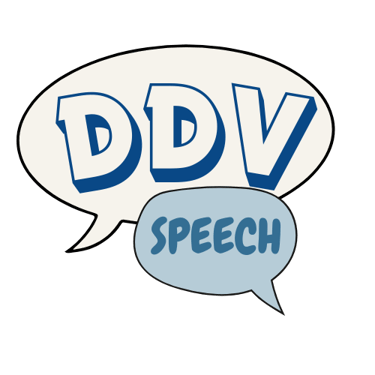Using One Activity to Target Multiple Goals in Speech Therapy
SLPs in schools have to target multiple goals in speech therapy. To save your energy and peace of mind, it is critical that you learn how to adapt one activity to target multiple goals. Here's one you can use right away: 1 activity = 8 goals.
MIDDLE SCHOOL SPEECH THERAPY
K. Abendroth
10/11/20256 min read


How to use one activity across multiple speech-language goals
In her well-known book, By Different Paths to Common Outcomes (1998), Marie Clay describes how young learners come to school with different experiences, learning styles, and cultures. Yet there is a common goal shared that students will learn to read.
This title comes to mind often when I mentor CFs and SLPs.
For our purpose, we could say "Different goals for common activities." Often clinicians feel overwhelmed trying to construct numerous activities for the wide range of goals we target in schools. What most veteran SLPs will tell you is to work smarter, not harder.
With 60-80 students on a caseload, you cannot create individualized activities for each goal (nor should you)!
Instead, you only need the following to target a wide range of goals:
Open-ended theme or topic
Robust group discussion
Pivot within the session if an activity is not working
Below, I reflect on a recent activity I used with my 6th-12th grade speech-language students. I will lay out for you exactly what activity I chose, and which goal areas I was able to target.
I usually select one theme or activity to use all week with all students. This one required no preparation and I used it for 5 days. Hope you find it useful too!
If you are looking for outside the box ideas, check out this list 10 Fall Holidays that Go Beyond Pumpkins.
Activity Topic: Zoos
All you need to do is pull up 3 websites to show your students live streams or camera feeds of elephants. Here are the three I used.
To start a robust discussion, I first had students brainstorm pros and cons of zoos. I wrote these lists on the board, supporting the discussion as needed.
Based on the IEP goals, I then used this theme to target different areas.
Goal 1. Perspective Taking
Start by asking students if they like zoos or not. Some may remember visiting zoos as a little kid, or say they have never been to one. Continue to push them to state an opinion and ask group members their opinion.
Then as a group list at least 3 pros and 3 cons for zoos. Most of my high school groups could do this with support, but my middle school groups had more difficulty, so I modified the activity (described below in goal 2).
Once you have the 3 pros and cons written visually on a graphic organizer or dry erase board, overtly state how there can be different perspectives and opinions about the same topic.
Ask if the discussion has changed their own opinions of zoos. Most of my students gave more thoughtful, complex responses after this group discussion.
Next, watch the live zoo feeds and discuss which enclosures and habitats are more appropriate for elephants, or what the students would add to improve it.
In comparing and contrasting the zoo cams, most groups realized the elephants liked to stand in the shade, so more shade would be an improvement.
Goal 2: Sorting or listing categories
As I mentioned above, my middle schoolers had difficulty with listing pros and cons. They are seen in a self-contained class, with a push in model.
Since they could recall whether they had been to a zoo, but had trouble listing pros and cons, we switched gears.
For this group, I had them list animals that would live in a zoo versus animals that would not. Then I introduced the word "habitat" and we watched the three live zoo cams listed above.
After viewing different zoo habitats, we listed as a group all the things that should go in a proper habitat.
Again using the zoo cams of the same animal to make comparisons easy, I encouraged them to think like zoo keepers and state what they would add to improve the space. We listed these on the board.
Goal 3: Syntax (Grammar)
I have a few students whose goals are related to grammar or syntax, such as using past tense correctly to describe past events.
For these students, within the group, I made sure to ask them to tell their peers about a time they went to the zoo with a first, then, and last prompt.
One student responded that she had seen kittens born, so I guided the conversation back to zoos by remarking, "That is so cool! Sometimes baby animals are born at the zoo, which might be why you thought of that example."
You could also use this with future tense, e.g., what do you think the elephant will do next on the live feed? For parts of speech, identify nouns, verbs, and adjectives that are associated with zoos.
Goal 4. Persuasive arguments
Similar to perspective taking, being able to build a logical argument is an important pragmatic skill. It also aligns with common core standards, so often shows up on IEP goals.
Here, your role as the SLP is to facilitate group conversation by creating space for everyone to share their opinion after listing pros and cons.
Encourage students to list a reason that supports their opinion. I was surprised how many older students struggled with this component, so it can be an area of further discussion or a writing prompt.
The camera feeds can help student shape more concrete descriptions of why the do or do not support zoos.
Another way to develop persuasive skills is to watch ad for zoos, or ads against zoos, to see how they are trying to convince people to visit or not visit.
Goal 5. Wh-Questions
Ah, the classic comprehension goal. Encouraging students to answer Who, What, When, Where, Why, and How questions (affectionately called "Wh- questions" by educators) is an evergreen favorite.
Here are a few sample questions you can use related to zoo, or have students ask each other questions:
Who gives animals food and medicine at a zoo?
What do vegan groups think about zoos?
When might captivity be a best choice for animals?
Where are zoos you visited growing up?
Why do some people protest zoos?
How big should enclosures be?
Goal 6. Tier 2 Vocabulary
Expanding vocabulary is a useful skill as students get older to help them access the curriculum. I admit to using decontextualized flash cards when I first started working. I no longer use them because I don't see enough carryover.
Now I try to use the weekly theme or activity to build out vocabulary that is contextualized and related to our robust discussions. This works well if you have a student more than once per week.
Here are a few Tier 2 Vocabulary words we covered with the zoo activity:
habitat
species
endangered
extinction
enclosure
captivity
refuge
wildlife
reserve
sanctuary
As an SLP, you can facilitate comprehension by discussing words as a group, asking students to use Tier 2 words in a sentence, expand on student comments with the tier 2 word, and write it on the board.
Or have students create their own flashcards or Venn Diagrams (e.g., comparing zoos to wildlife reserves).
Goal 7. Synonyms & Antonyms
Identifying synonyms (words that mean nearly the same thing) or antonyms (opposites) are also, at their core, a vocabulary target.
Words that my student groups generated this week came from the pros and cons list or verbal descriptions of the zoo cam elephant habitats.
You can do this, then ask students to generate a word that means the same or opposite. Example words include: captivity, plants, shade, fence, wildlife, safe, and alone.
Goal 8. Articulation
Often older kids are still working on "late 8 sounds," such as /s, z, ch, th, sh, r, and l/.
Within the context of group discussions, you can certainly identify target sounds for your student to practice. Or ask them to generate animals that start with [target sound].
In my Summer Articulation Stories pack, there is a Zoo: Pros & Cons story to target /z/. I used this with students who had sessions twice per week after doing the above activities in the first session.
Conclusion
Using a consistent theme or topic all week allows my students to expand their knowledge and target multiple goals.
Following this zoo activity, I was pleasantly surprised how thoughtful student answers became after group discussion. Many students refined their opinion about zoos with qualifiers, such as "I still don't like animals being captive, but some zoos are better than others."
Or "Animals should live in the wild but if they are almost extinct, a zoo may be a safer place for them." This nuance was exactly what I hoped they would discover, as I facilitated the discussions.
Finally, if you are new SLP, you do not have to take data on every student every session! Collect data on 1-2 students per session and shape your group discussion around those language skills that you are measuring.
Have more questions? DM me on Instagram @DDVSpeech. I love to mentor and support newer SLPs!
Need more ideas? Download this free therapy cheat sheet with 10 more goal areas and links to free activities!
Join my Pack
Join my pack and get started with free neurodiversity-affirming handouts for speech-language pathologists.
Contact Katie
Connect
© 2024. All rights reserved.






